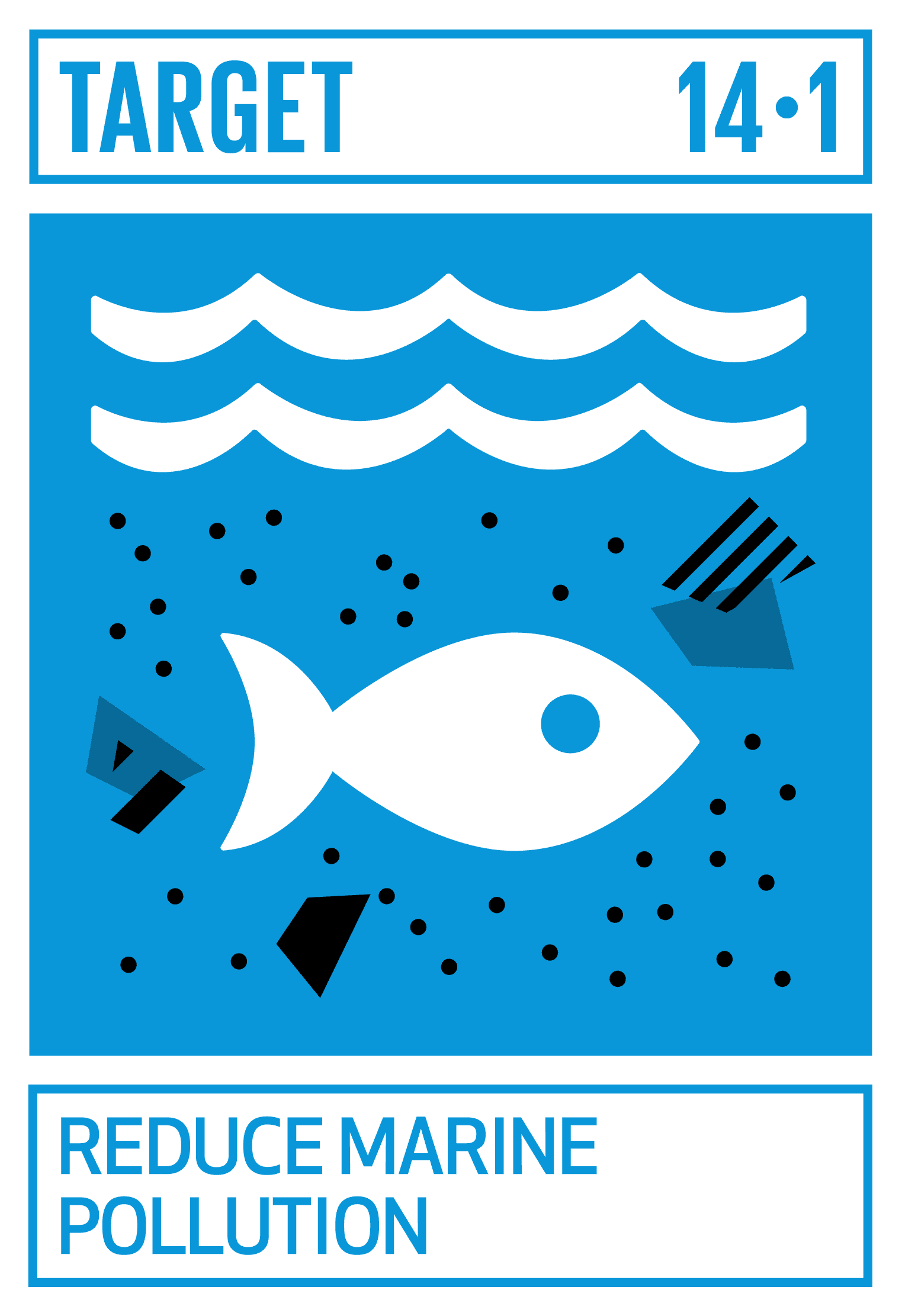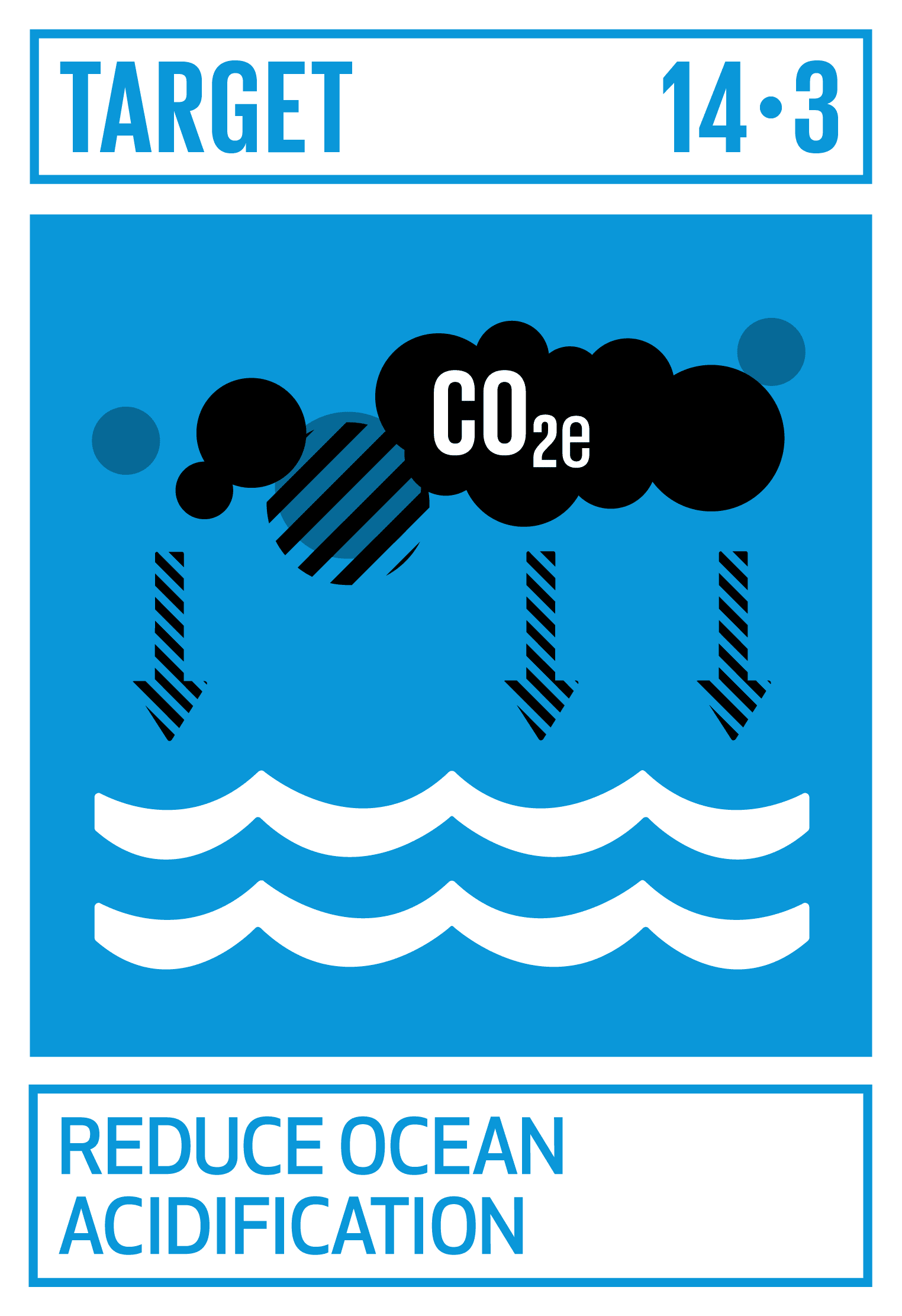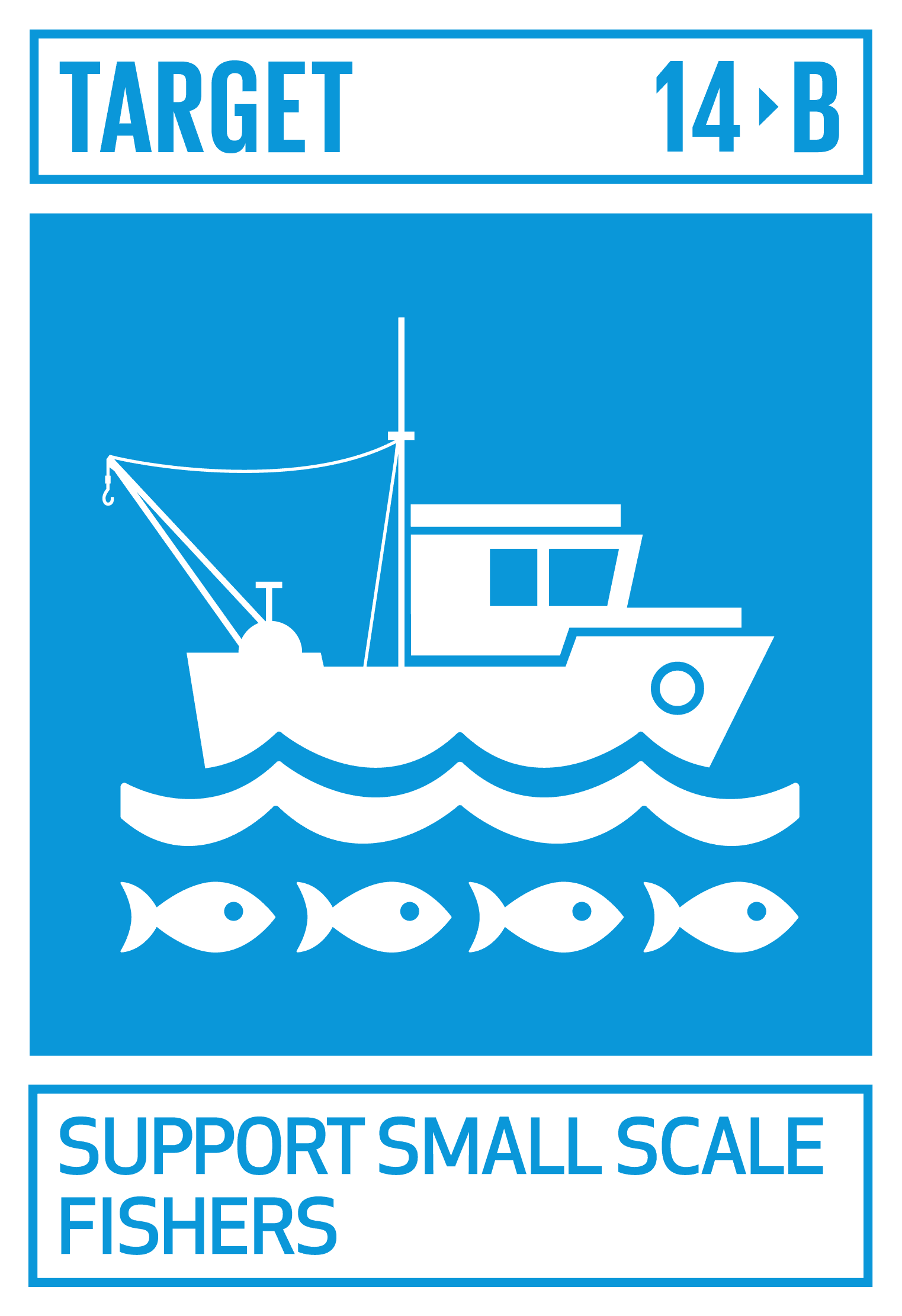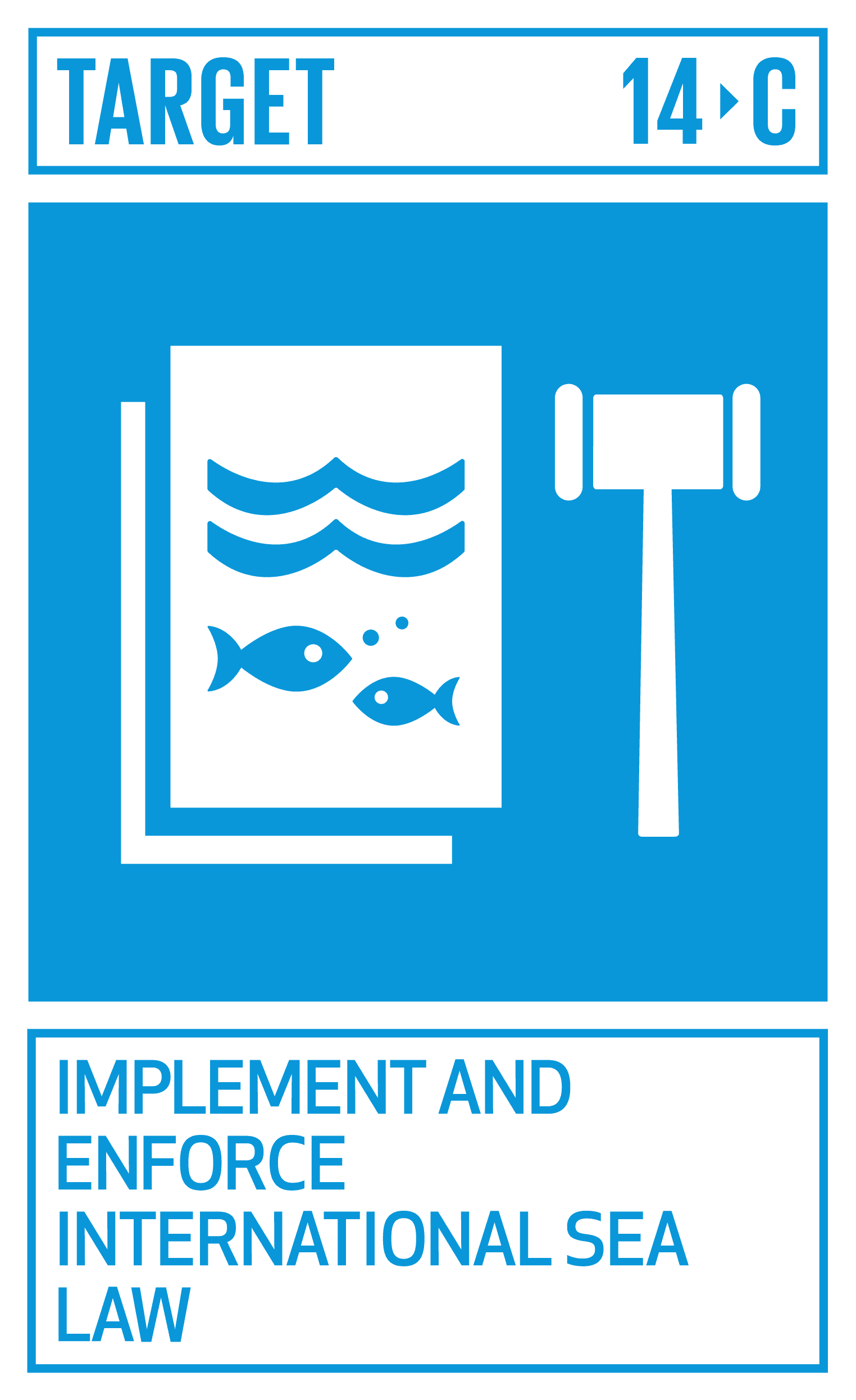14.1
By 2025, prevent and significantly reduce marine pollution of all kinds, in particular from land-based activities, including marine debris and nutrient pollution.
至 2050 年前,有效預防並大幅的減少海洋汙染,如海洋廢棄物和營養鹽汙染。

By 2025, prevent and significantly reduce marine pollution of all kinds, in particular from land-based activities, including marine debris and nutrient pollution.
至 2050 年前,有效預防並大幅的減少海洋汙染,如海洋廢棄物和營養鹽汙染。

By 2020, sustainably manage and protect marine and coastal ecosystems to avoid significant adverse impacts, including by strengthening their resilience, and take action for their restoration in order to achieve healthy and productive oceans.
至 2020 年前,為了創造健康又具生產力的海洋與避免對環境造成重大負面影響,應以永續的方式管理與保護海洋及海岸生態,包括增強生物適應能力與環境復原力。

Minimize and address the impacts of ocean acidification, including through enhanced scientific cooperation at all levels.
嘗試解決海洋酸化問題並最小化其影響,包含加強科學研究合作。

By 2020, effectively regulate harvesting and end overfishing, illegal, unreported and unregulated fishing and destructive fishing practices and implement science-based management plans, in order to restore fish stocks in the shortest time feasible, at least to levels that can produce maximum sustainable yield as determined by their biological characteristics.
至 2020 年前,有效的規範捕撈並終結過度捕撈與其他非法、未報告及未受規範漁業(IUU fishing)以及其他毀滅性的漁撈方式;並發展具科學依據的管理計畫,在最短時間內使魚類資源恢復到依據其生物特性可永續發展的數量水平。

By 2020, conserve at least 10 per cent of coastal and marine areas, consistent with national and international law and based on the best available scientific information.
至 2020 年前,依照國家和國際法規以及其他科學資訊,保護至少10%的海岸和海域。

By 2020, prohibit certain forms of fisheries subsidies which contribute to overcapacity and overfishing, eliminate subsidies that contribute to illegal, unreported and unregulated fishing and refrain from introducing new such subsidies, recognizing that appropriate and effective special and differential treatment for developing and least developed countries should be an integral part of the World Trade Organization fisheries subsidies negotiation.
至 2020 年前,禁止所有助長過度捕撈和非法、未報告及未受規範漁業(IUU fishing)的補助,避免再引進類似的補助;並且在世界貿易組織的漁業補助協商中,應給予開發中國家和最低度開發國家適當和有效的差別待遇。

By 2030, increase the economic benefits to Small Island developing States and least developed countries from the sustainable use of marine resources, including through sustainable management of fisheries, aquaculture and tourism.
至 2030 年前,提升小島開發中國家和最低度開發國家透過永續利用海洋資源所獲得的經濟利益,包涵以永續的方式管理漁業、水產養殖業和觀光產業。

Increase scientific knowledge, develop research capacity and transfer marine technology, taking into account the Intergovernmental Oceanographic Commission Criteria and Guidelines on the Transfer of Marine Technology, in order to improve ocean health and to enhance the contribution of marine biodiversity to the development of developing countries, in particular small island developing States and least developed countries.
為了提升海洋的健康與海洋生物多樣性在開發中國家的發展,尤其是小島開發中國家和最低度開發國家,應積極提升科學知識、發展研究能力並轉讓/傳授海洋科技,並參考政府間海洋學委員會提出的海洋科技轉讓/傳授準則。

Provide access for small-scale artisanal fishers to marine resources and markets.
提供小規模、個人的漁民進入海洋資源和市場的管道。

Enhance the conservation and sustainable use of oceans and their resources by implementing international law as reflected in UNCLOS, which provides the legal framework for the conservation and sustainable use of oceans and their resources, as recalled in paragraph 158 of The Future We Want.
透過執行聯合國海洋法公約中提供之保護與永續利用海洋資源的合法架構,提升海洋資源的保存與永續利用,也正如「我們要的未來」此書中第158段所提及的。
2015 年 9 月 25 日,聯合國成立 70 週年之際,世界領袖們齊聚聯合國紐約總部,舉行「聯合國發展高峰會」,基於千禧年發展目標未能達成的部份,發佈了《翻轉我們的世界:2030 年永續發展方針》。這份方針提出了所有國家都面臨的問題,並基於積極實踐平等與人權,規畫出 17 項永續發展目標及 169 項追蹤指標,作為未來 15 年內(2030 年以前),成員國跨國合作的指導原則,而 17 項永續發展目標,都需透過169 項追蹤指標來進一步解釋,同時也透過追蹤指標,來評估永續發展目標是否被達成。
而 Impact Hub 作為全球最大的社會創新網,從2016年開始,Impact Hub Taipei 將聯合國永續發展目標(SDGs)融入品牌精神中並以此為號召,將永續的概念帶進學校、企業及公部門,串連更多夥伴一起加入永續行動的行列,透過夥伴關係達成永續發展目標,讓影響力從這裡開始發生!若您想了解如何讓企業內部員工認識永續發展,或是如何於學校授課課程中融入永續發展知識,都歡迎與我們聯繫,聯絡信箱 [email protected]。